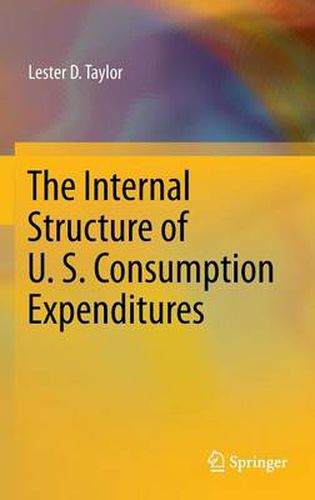Readings Newsletter
Become a Readings Member to make your shopping experience even easier.
Sign in or sign up for free!
You’re not far away from qualifying for FREE standard shipping within Australia
You’ve qualified for FREE standard shipping within Australia
The cart is loading…






This title is printed to order. This book may have been self-published. If so, we cannot guarantee the quality of the content. In the main most books will have gone through the editing process however some may not. We therefore suggest that you be aware of this before ordering this book. If in doubt check either the author or publisher’s details as we are unable to accept any returns unless they are faulty. Please contact us if you have any questions.
Usually, when we consider the information that is given in a household budget survey, we do so in terms of expenditures for different goods and services and how these relate to income, prices, and socio demographic factors such as age, family size, and education. Allocation of expenditures amongst different categories of consumption is seen as being determined by tastes and preferences acting in conjunction with a constraint imposed by prices and income. The parameters thus obtained are obviously useful in analyzing the impact on consumption resulting from changes in income and prices (should the latter be available), but income and price elasticities, in themselves, say little about the internal structure of consumption spending. How expenditures for housing, transportation, and personal care to pick three standard categories of consumption spending - are related to expenditures for food, for example, has never been a direct focus of empirical study. This book focuses on these relationships and provides insight into consumer behavior that complements and goes beyond that given by conventional price and income elasticities, making it of interest to students as well as economists in both government and academia concerned with consumer behavior.
$9.00 standard shipping within Australia
FREE standard shipping within Australia for orders over $100.00
Express & International shipping calculated at checkout
This title is printed to order. This book may have been self-published. If so, we cannot guarantee the quality of the content. In the main most books will have gone through the editing process however some may not. We therefore suggest that you be aware of this before ordering this book. If in doubt check either the author or publisher’s details as we are unable to accept any returns unless they are faulty. Please contact us if you have any questions.
Usually, when we consider the information that is given in a household budget survey, we do so in terms of expenditures for different goods and services and how these relate to income, prices, and socio demographic factors such as age, family size, and education. Allocation of expenditures amongst different categories of consumption is seen as being determined by tastes and preferences acting in conjunction with a constraint imposed by prices and income. The parameters thus obtained are obviously useful in analyzing the impact on consumption resulting from changes in income and prices (should the latter be available), but income and price elasticities, in themselves, say little about the internal structure of consumption spending. How expenditures for housing, transportation, and personal care to pick three standard categories of consumption spending - are related to expenditures for food, for example, has never been a direct focus of empirical study. This book focuses on these relationships and provides insight into consumer behavior that complements and goes beyond that given by conventional price and income elasticities, making it of interest to students as well as economists in both government and academia concerned with consumer behavior.